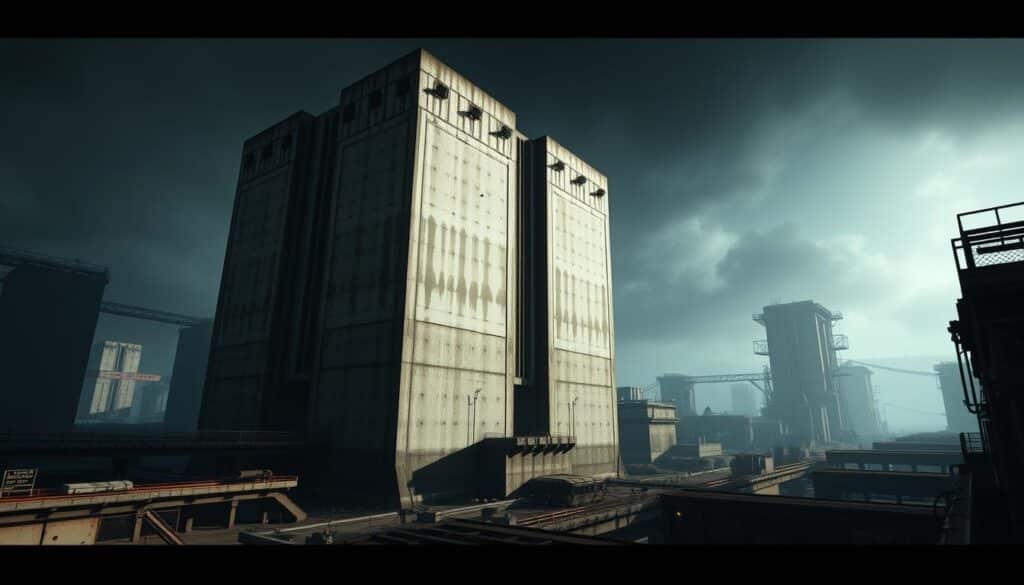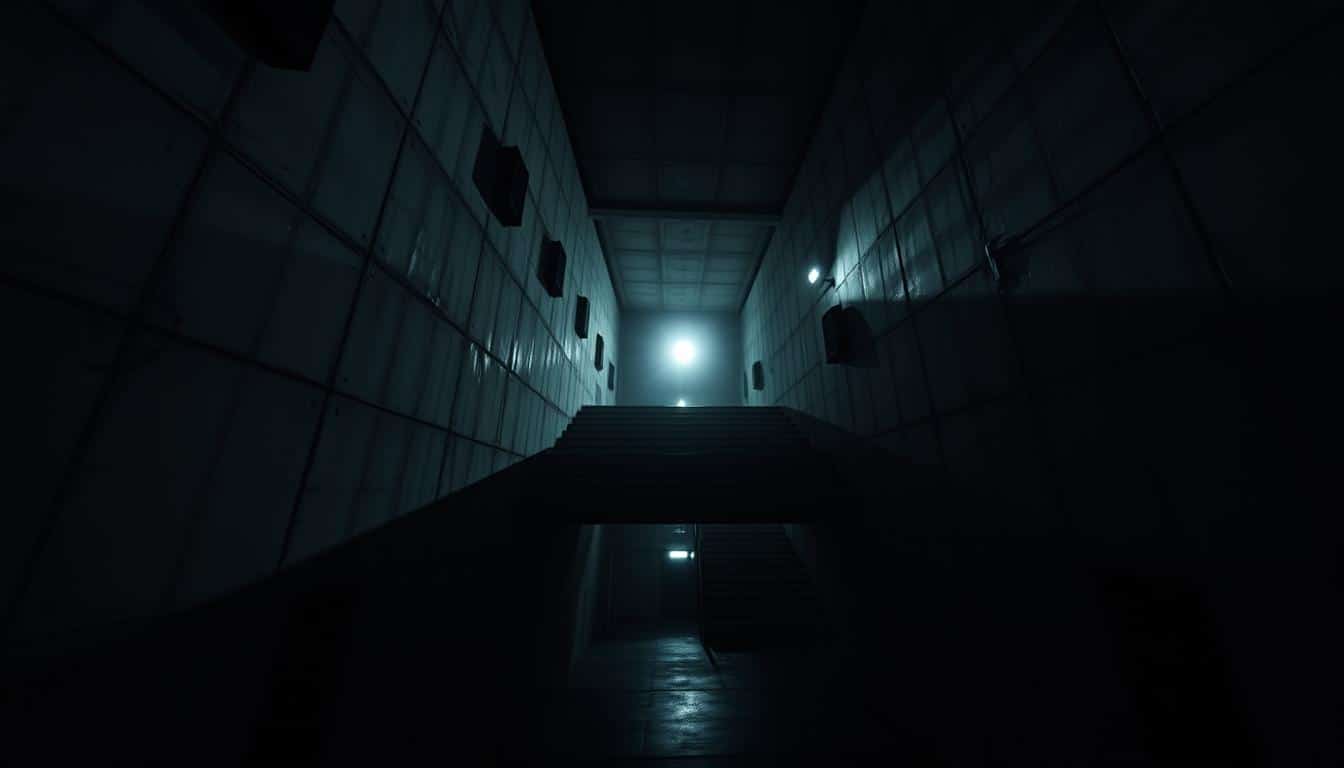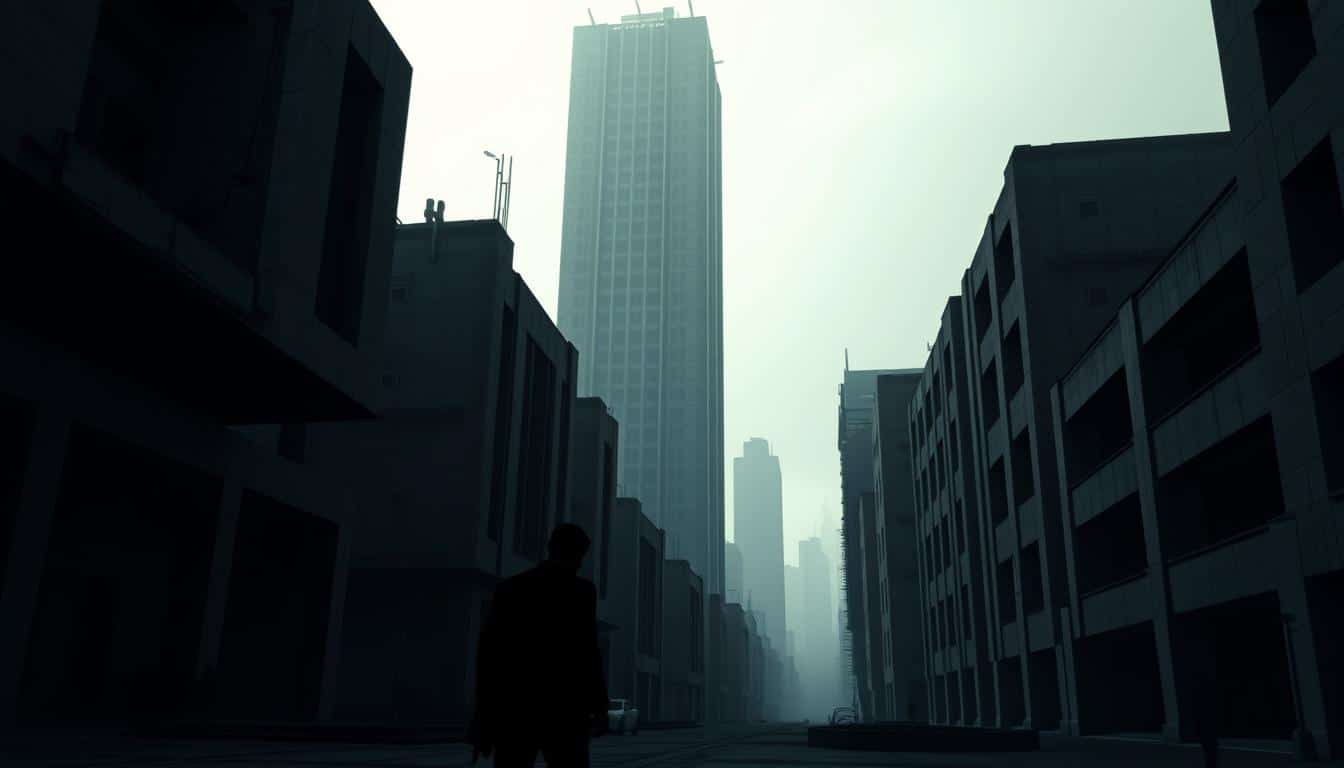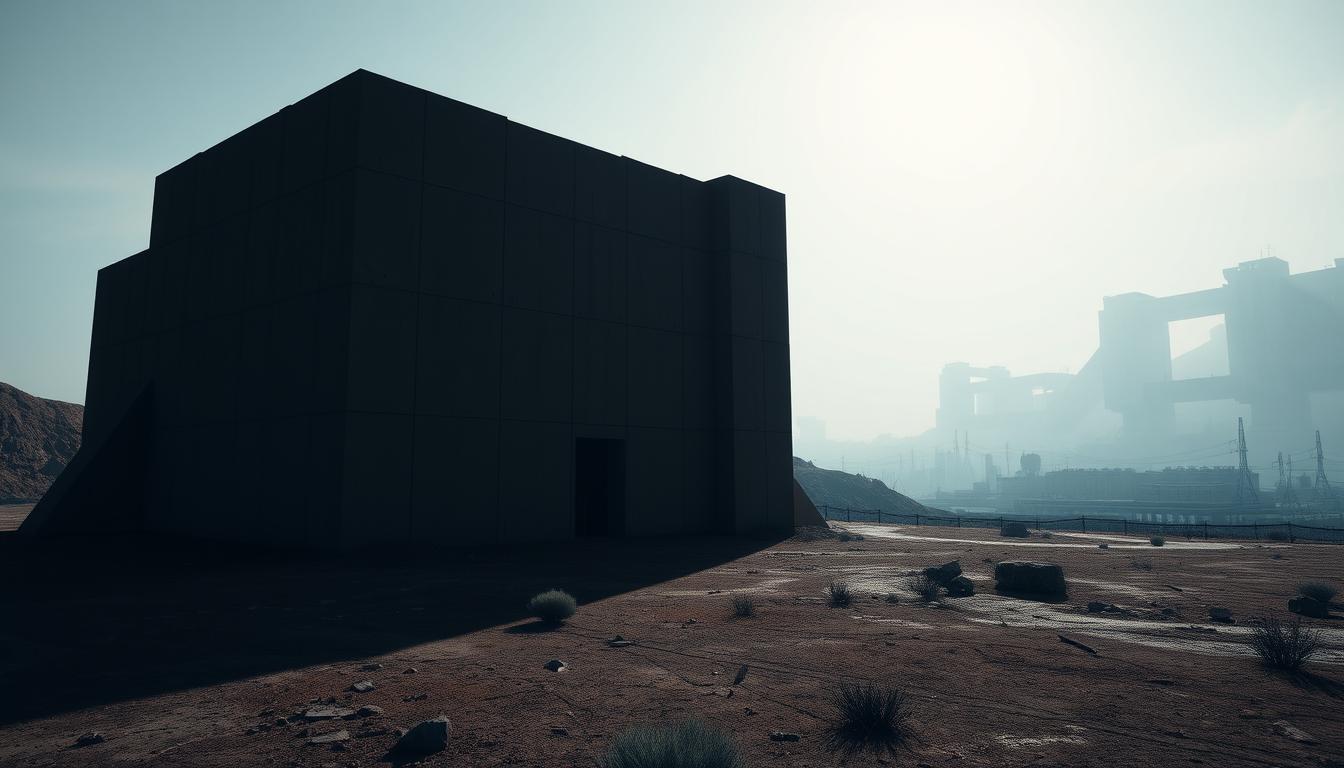Brutalist design greatly shapes the look of many video games. It offers a special way to see the virtual worlds we play in. With its raw materials and big buildings, it fits well into game settings. It combines functionality with a simple beauty that draws in gamers.
This look into Brutalist design covers where it came from, what it looks like, and its big impact on architecture. Understanding Brutalism helps us see its important role in video games better.
Introduction to Brutalist Design
Brutalist architecture started in the late 1940s. It’s known for its stark, raw look with lots of exposed concrete and big structures. This style was a response to the fancy designs of the past. It focuses on being functional and true to the materials used.
Brutalism is known for its bold geometric shapes, sense of heaviness, and unfinished look. These elements combine to create a style that is serious and practical.
Brutalist architecture is not just for traditional buildings. It also plays a unique role in digital creativity. In gaming, Brutalism’s strong visual language draws players into immersing worlds. It makes the game space look like Brutalist buildings. This adds to the themes of exploration and finding new things. It also shows the game’s raw, unfiltered nature.

Origins and Characteristics of Brutalism
Brutalism got its name from the French phrase “béton brut,” or raw concrete. This style has deep roots in mid-20th century architecture. After World War II, it emerged as a response to the era’s challenges. Figures like Le Corbusier greatly influenced Brutalism, showcasing its principles in the Unité d’Habitation.
Brutalism stands out for its unique visual features. These include:
- Raw concrete finishes and rugged textures
- Modular designs emphasizing functionality
- Bold geometric forms that create striking silhouettes
The style’s affordable construction was ideal for the times, catering to the needs of growing cities. It evolved to spotlight the beauty of bare structures and materials. This revealed the true nature of a building’s design.
Impact of Brutalism on Architectural Aesthetics
Brutalism has left a deep mark on today’s architectural style. Its focus on simple, rough materials makes buildings evoke strong feelings. They serve as both practical spaces and bold art pieces. These structures remind us of the great monuments of old, like the Egyptian pyramids, showing their deep cultural importance.
But Brutalism does more than just look different. It pushes back on old design ideas, celebrating the raw truth of construction. This way of building shows a love for realness in today’s architecture. By dropping decorative touches, Brutalist buildings bring people and the surrounding world closer together. This encourages deep thinking in these spaces.
The effects of Brutalism on how buildings look and feel are clear. It shapes how architects think about and create spaces now. Brutalism champions function and feeling in design, guiding the next wave of architectural innovation.
Analyzing Brutalist Influences in Video Game Design
Video games are now using Brutalist styles more and more. They use raw materials like concrete and steel to make unique virtual worlds. This creates a special look that makes games more fun to play. Gamers find themselves in places that are simple yet powerful. This invites them to explore these worlds more deeply. The designs do more than just look good. They show the practical side of Brutalism too.
The Role of Raw Materials
Using raw materials is key to Brutalist video game design. Concrete buildings stand tall, making the games feel real and sturdy. These simple materials create a look that’s both minimal and honest. This lets players move through bold, challenging spaces. It changes how they see and interact with the game. The heavy use of steel and concrete draws players in even more, making the game world feel real.
Functional Aesthetics in Virtual Environments
In video games, design often focuses on how things work and look, much like in Brutalist buildings. Simple shapes and clean lines create a setting where less is more. Every part of the game has a reason, which makes playing straightforward and the look consistent. This approach to design helps players understand the game’s design ideas. It links the digital world to Brutalism’s main beliefs.
Notable Examples of Brutalist Design in Games
In the gaming world, some games truly stand out for their Brutalist design. NaissanceE and Control are two such games. These titles beautifully capture Brutalist aesthetics. They also give players new ways to see and explore their worlds.
NaissanceE: A Journey Through Architecture
NaissanceE lets players dive into a world shaped by stark architectural beauty and contrast. It shows how Brutalist design can stir thoughts and amazement. The game’s simple yet intricate world encourages players to look closer, uncovering eerie beauty that sticks with you.
Control: The Oldest House as a Character
In Control, the Oldest House isn’t just a setting; it’s a key part of the story. This building illustrates Brutalist design’s power. Its changing spaces and surreal feel make the game more engaging. It deepens the emotional journey for players.
Comparative Styles: Brutalism vs. Other Architectural Movements
Brutalism stands out from other architectural movements. It’s known for its bold use of raw materials and a focus on function. Unlike Deconstructivism and Suprematism, Brutalism emphasizes the building’s form over detailed decorations.
Deconstructivism, in contrast, plays with breaking traditional shapes and adding chaos. Brutalism, however, is all about the raw truth of materials and construction. It’s very different from Deconstructivism’s complex and playful designs.
Key characteristics of these architectural movements include:
- Brutalism: Embraces rough concrete, geometric forms, and a sense of presence.
- Deconstructivism: Focuses on disjointed shapes and a sense of unpredictability.
- Suprematism: Celebrates geometric abstraction, often devoid of functional intent.
Comparing these helps explain Brutalism’s lasting appeal. While movements like Deconstructivism aim for art, Brutalism brings simple, lasting beauty to modern design. This is why it remains influential today.
The Emotional Impact of Brutalist Game Design
Brutalist design in gaming evokes a range of feelings, deeply impacting how players feel. Its stark and imposing nature creates spaces that feel grand and lonely at the same time. This mix creates an atmosphere filled with awe and discomfort.
This type of design challenges what we usually find beautiful. It makes players more aware of their environment. The big scale and use of raw materials in these games enhance the story they tell. Players find themselves in a world that goes beyond gameplay, pushing emotional limits.
By adding Brutalist elements, developers draw players into a deeper mental engagement. The unique architecture makes exploration even more interesting. This leads to greater immersion. As players move through these spaces, they find details that make them think and feel more connected to the story.
The Future of Brutalism in Gaming
As technology advances, more games are exploring Brutalism. This means we’ll see big changes in digital architecture in games. Developers have a great chance to mix minimal designs with fun worlds that grab players.
Today, games focus a lot on player interaction. By mixing Brutalism with tech, games can offer new, challenging experiences. Game makers can use the bold look of Brutalism for compelling stories. This could change how players see and interact with games.
The growth of digital architecture in games is exciting. It opens up new ways for Brutalism to influence the gaming world. By mixing game play and architectural design, creators can offer unique games. Embracing Brutalism could lead to immersive games that players deeply connect with.
Conclusion
The study of Brutalist design in video games shows a big impact on their look. Brutalist design’s focus on simple forms and raw materials fits perfectly with digital worlds. This makes games more engaging and reflects the influence of real-world architecture.
This discussion highlights Brutalism’s effect on game visuals and how it links architecture and gaming. As both areas grow, their connection gets clearer. This helps us see how design and function come together. Through Brutalism, game makers are pushing the boundaries of what games can be.
Looking forward, Brutalism’s impact will likely guide new game designers. By using its bold style, they will add depth to game stories. The use of raw looks in games will keep bringing architecture into the virtual world, shaping the future of game design.



